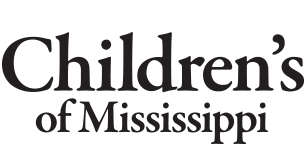More Information
- Children’s Plastic and Reconstructive Surgery Home
- Children's Craniofacial Services
-
Conditions and Treatments
- Conditions We Treat
-
More Information
- Ear deformities: microtia, anotia and constricted ear
- Cleft Lip and Palate
- Congenital nevus
- Craniosynostosis
- Dermoid cyst
- Nose deformities, nasal breathing problems
- Orbital hypertelorism
- Pierre Robin Sequence/Syndrome
- Positional Plagiocephaly: Flat Head Syndrome
- Prominent ears
- Velopharyngeal dysfunction
- Frequently Asked Questions
- Meet Our Team
- Patient/Family Resources
- Visit Preparation
Nose deformities, nasal breathing problems
Nose deformities, which include any abnormal shape and/or structure of the nose, may cause problems breathing through the nose. These deformities can be present at birth, like a cleft lip/palate, or can happen because of an injury or a medical condition.
Reasons for nose surgery in children
Nose surgery is sometimes done to help children breathe better, and sometimes to improve how the nose looks. Certain surgeries help with both.
A very common problem in the nose is called a deviated septum. The septum is the wall between the two sides of the nose. A deviation is an abnormal bend in the septum. Sometime surgery is needed to straighten the septum to make airflow easier. The surgery to repair a deviated septum is called septoplasty (SEP-toe-plas-tee).
Surgery that reshapes the nose is called rhinoplasty (RI-no-plas-tee). This type of surgery in children is commonly delayed until the nose has finished growing. In girls, this is around age 15-16. In boys, it is around age 16-17. Waiting until then is important to prevent surgery from interfering with the nose’s normal growth.
Some conditions require surgery before the nose has finished growing. These include cleft lips/palates, masses and severe injuries. In these cases, pediatric craniofacial surgeons at Children’s of Mississippi use surgical techniques that avoid the areas of the nose where growth takes place. Sometimes, more surgery is then done later after the nose has finished growing.
What to expect during surgery
Nose surgeries at Children’s of Mississippi are performed with general anesthesia from pediatric anesthesiologists. These specialists understand how to keep children asleep and comfortable during the operation.
There are two general categories of nose surgery. One, called a closed procedure, is done inside the nose where the incisions don't show. In the other type, called an open procedure, the surgeon makes an incision through the narrow strip of skin you see between the nostrils.
In younger children, surgeons most often use an open procedure. This is because the nasal area is very small, and an open surgery helps them see the area they are working on better.
During surgery, the surgeon will very gently reshape the nose underneath the skin that covers the bones of the nose. At the same time, any repairs that need to be made, such as straightening a deviated septum, can also be done. When all the shaping and repairs are finished, the surgeon will close the incisions.
After surgery, children will be carefully watched in the recovery area until they wake up from surgery. Once they are alert and doing well, most children will be able to go home.
What to expect after surgery
After surgery, your child may have some trouble breathing through the nose for a while. There may also be some bruising and swelling. Your child’s craniofacial surgeon will give you specific instructions for caring for your child and things to watch for. This will include ways to manage any pain or discomfort and how to spot possible problems such as infections. You will also get instructions about activities your child needs to avoid. Finally, the care team will schedule a follow-up appointment for your child with the surgeon.
What insurance covers
To be on the safe side, it is a good idea to call your insurance provider and ask what is covered for your child’s nose surgery. Many types of nose surgery are covered, but it is always better to ask.
Get help with nose deformities
You can request an appointment with a craniofacial specialist at Children’s of Mississippi. Request an appointment online.
Last reviewed: August 18, 2025



 UMMC
UMMC